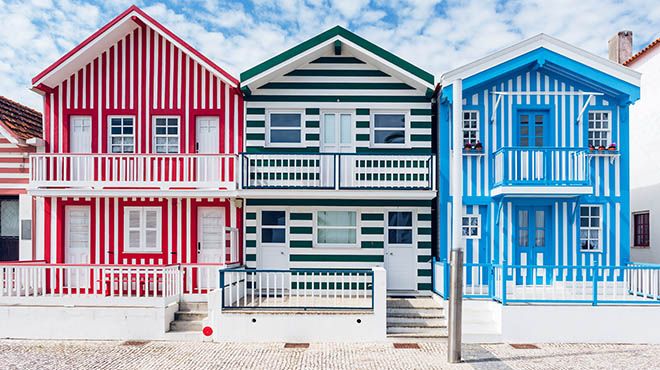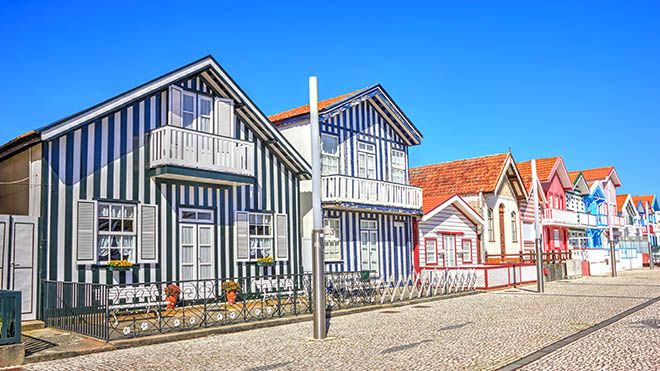Costa Nova

Costa Nova
Other
In the mid-19th century, this became a very popular beach, largely through the influence of the tribune and politician José Estevão, who built his own palheiro here (recognisable by its blue and brown stripes). It was in this house that he met with intellectuals and politicians, including the writer Eça de Queiroz.
Palheiros are the traditional houses built in this coastal region of Portugal, which provided shelter for colonies of fishermen, as well as for the machinery and animals that were used to haul the fishing boats onto the beach.
Initially, they were built on stakes to prevent the accumulation of sand blown there from the nearby dunes.
Towards the end of the 19th century when it became fashionable to bathe in the sea, the local fishermen began to rent out their palheiros in the summer season and the idea then arose to paint the outside panels of these wooden houses in bright colours. In this way, they are reminiscent of the polychrome moliceiros, the boats used for harvesting seaweed on the Ria de Aveiro, all of which gives this coastline a brightly-coloured and quite unique appearance.
Palheiros are the traditional houses built in this coastal region of Portugal, which provided shelter for colonies of fishermen, as well as for the machinery and animals that were used to haul the fishing boats onto the beach.
Initially, they were built on stakes to prevent the accumulation of sand blown there from the nearby dunes.
Towards the end of the 19th century when it became fashionable to bathe in the sea, the local fishermen began to rent out their palheiros in the summer season and the idea then arose to paint the outside panels of these wooden houses in bright colours. In this way, they are reminiscent of the polychrome moliceiros, the boats used for harvesting seaweed on the Ria de Aveiro, all of which gives this coastline a brightly-coloured and quite unique appearance.









 Explore
Explore 
 Remember and Share
Remember and Share 


